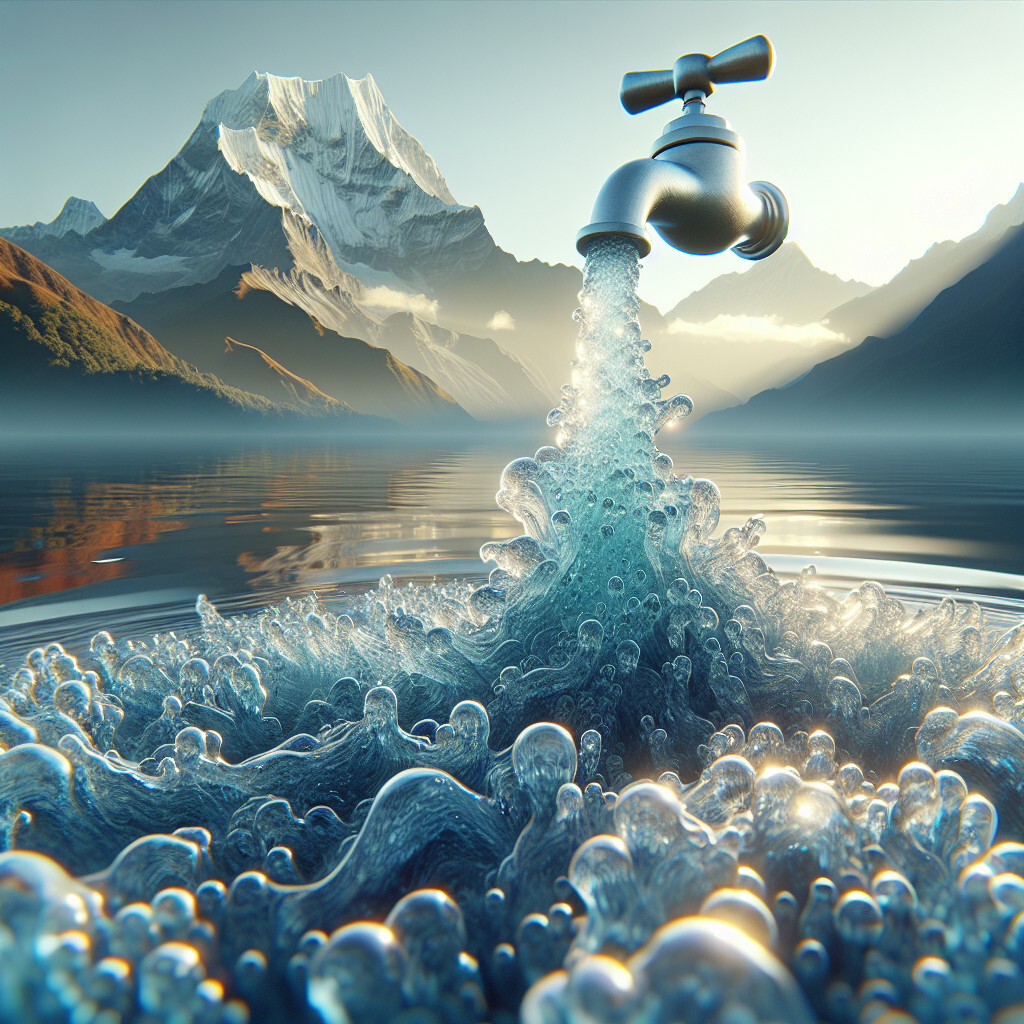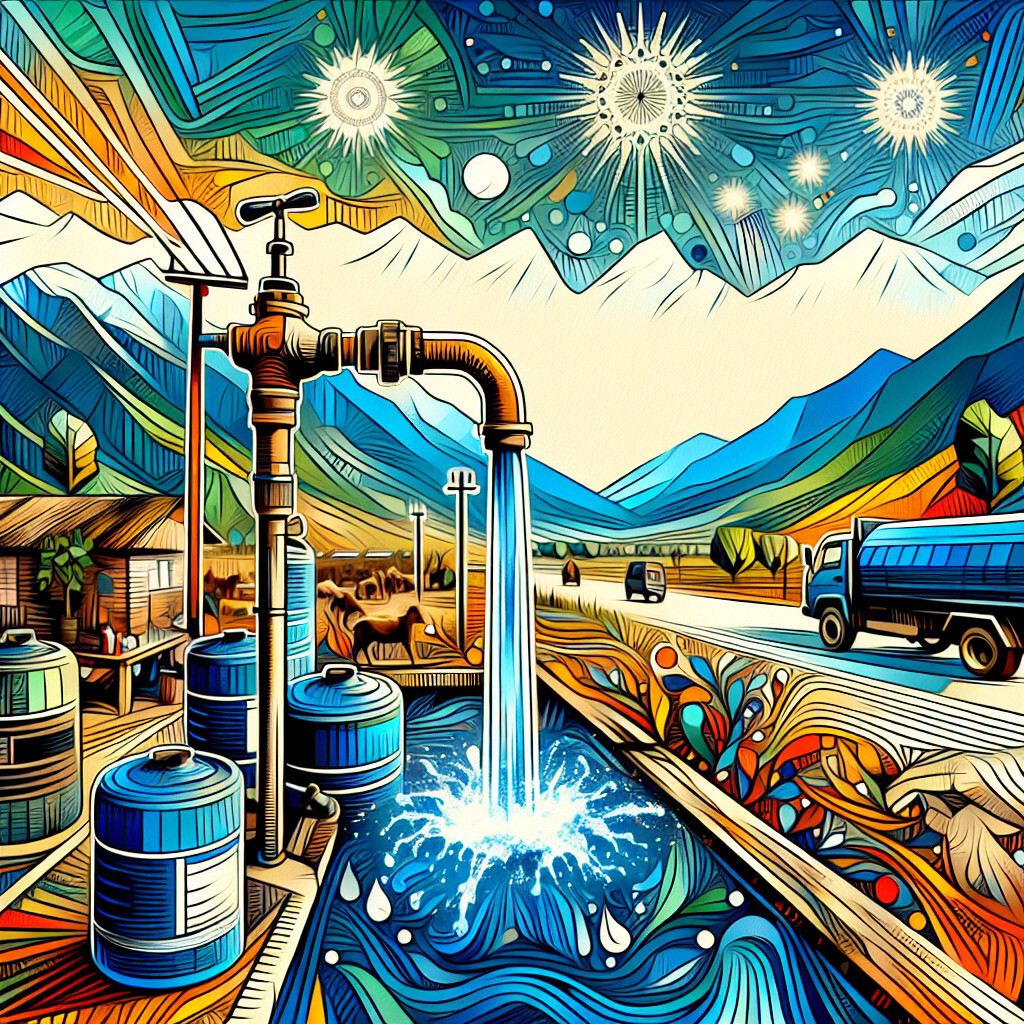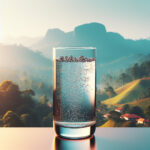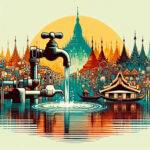-
Table of Contents
“Nepal’s Tap Water: A Challenge of Purity and Accessibility.”
Introduction

The tap water in Nepal is generally not considered safe for direct consumption due to contamination issues. The country’s water supply infrastructure is often inadequate, leading to problems with access to clean and safe drinking water. The water quality varies across different regions, with rural areas being more affected than urban ones. Contaminants such as bacteria, viruses, and heavy metals are often found in the tap water, posing significant health risks. Therefore, it is common for locals and tourists to rely on bottled water, water purification tablets, or boiling as methods to ensure water safety.
Understanding the Quality of Tap Water in Nepal
Nepal, a landlocked country nestled in the heart of the Himalayas, is renowned for its stunning landscapes, rich culture, and diverse wildlife. However, despite its natural beauty and resources, the country faces significant challenges in providing clean and safe tap water to its citizens. Understanding the quality of tap water in Nepal is crucial, as it directly impacts the health and well-being of the population.
The primary source of tap water in Nepal is surface water from rivers, lakes, and springs, which are abundant in the country due to its mountainous terrain. However, the quality of this water is often compromised due to various factors. One of the main issues is the lack of proper sanitation and waste management systems, leading to the contamination of water sources. Additionally, industrial effluents and agricultural runoff, laden with harmful chemicals and pesticides, further degrade the water quality.
Moreover, the country’s water supply infrastructure is outdated and poorly maintained. The water pipelines are often corroded and leaky, leading to the seepage of pollutants into the water. Furthermore, the water treatment facilities are inadequate and often fail to remove all contaminants from the water. As a result, the tap water in many parts of Nepal is not safe for direct consumption without proper treatment.
The quality of tap water in Nepal also varies significantly across different regions. In urban areas, where there is better access to water treatment facilities, the tap water is generally safer to consume. However, it is still advisable to boil or filter the water before drinking. On the other hand, in rural areas, where access to clean water is limited, the tap water is often contaminated with bacteria, viruses, and other harmful substances. This situation is further exacerbated during the monsoon season when the risk of waterborne diseases increases significantly.
The government of Nepal has been making efforts to improve the quality of tap water. Several projects have been initiated to upgrade the water supply infrastructure and expand access to clean water. However, these efforts have been hampered by various challenges, including lack of funding, technical expertise, and coordination among different stakeholders.
Nonetheless, there are also several non-governmental organizations (NGOs) and international agencies working to improve the water situation in Nepal. They are involved in various initiatives, such as building water filtration systems, providing water purification tablets, and educating the public about the importance of clean water and sanitation.
In conclusion, the quality of tap water in Nepal is a matter of concern that needs immediate attention. While the government and various organizations are making efforts to address this issue, it is also crucial for individuals to take precautions to ensure their water is safe to consume. This includes boiling or filtering tap water, especially in rural areas, and maintaining good hygiene practices to prevent waterborne diseases. As Nepal continues to develop and modernize, it is hoped that the quality of its tap water will improve, contributing to the overall health and well-being of its people.
Health Implications of Drinking Tap Water in Nepal
Nepal, a landlocked country nestled in the heart of the Himalayas, is renowned for its stunning landscapes, rich culture, and diverse wildlife. However, despite its natural beauty and resources, the country grapples with a significant issue that affects the health and well-being of its residents: the quality of its tap water.
The tap water in Nepal, particularly in urban areas, is often contaminated with harmful bacteria, viruses, and other pollutants. This is primarily due to inadequate sanitation facilities, poor waste management, and the lack of a comprehensive water treatment system. The water supply in many areas is sourced from shallow wells and rivers, which are susceptible to contamination from human and animal waste, industrial pollutants, and agricultural runoff.
Drinking such contaminated tap water can have serious health implications. The most common health problems associated with consuming polluted water in Nepal are waterborne diseases, including diarrhea, dysentery, typhoid, and cholera. These diseases can be particularly dangerous for children, the elderly, and individuals with compromised immune systems, leading to severe dehydration and, in extreme cases, death.
Furthermore, long-term exposure to certain contaminants found in the tap water can lead to chronic health conditions. For instance, arsenic, a toxic element often found in the groundwater in the Terai region of Nepal, can cause skin lesions, cancer, and other serious health problems when consumed over a prolonged period. Similarly, consuming water contaminated with heavy metals like lead and mercury can lead to neurological disorders and developmental issues in children.
The health implications of drinking tap water in Nepal are further exacerbated by the country’s challenging geographical terrain and frequent natural disasters. Landslides and earthquakes often damage water infrastructure, leading to further contamination of the water supply. Moreover, in remote mountainous regions, access to clean water is limited, forcing residents to rely on potentially unsafe sources.
Despite these challenges, efforts are being made to improve the quality of tap water in Nepal. Non-governmental organizations, international aid agencies, and the Nepalese government are working together to build water treatment facilities, improve sanitation, and educate the public about the importance of drinking clean water. These initiatives have led to some improvements, but there is still a long way to go.
In the meantime, it is crucial for residents and visitors in Nepal to take precautions to avoid the health risks associated with drinking tap water. Boiling water before consumption, using water purification tablets, or drinking bottled water from a reliable source are some of the measures that can be taken to ensure the water is safe to drink.
In conclusion, the tap water in Nepal, while improving, is often not safe to drink due to contamination with harmful substances. This poses significant health risks, particularly waterborne diseases and long-term health conditions caused by exposure to toxic elements. Efforts are underway to improve the situation, but until then, precautions must be taken to ensure the safety of the water consumed. The health implications of drinking tap water in Nepal underscore the importance of access to clean water, a fundamental human right that is essential for health and well-being.
The Role of Government in Ensuring Safe Tap Water in Nepal
Nepal, a landlocked country nestled in the heart of the Himalayas, is renowned for its breathtaking landscapes, rich cultural heritage, and diverse flora and fauna. However, despite its natural beauty and resources, the country faces significant challenges in providing safe and clean tap water to its citizens. The role of the government in ensuring safe tap water in Nepal is therefore crucial and multifaceted.
The government of Nepal, recognizing the importance of clean water for the health and well-being of its citizens, has made significant strides in improving water quality and accessibility. The Ministry of Water Supply and Sanitation (MoWSS), the primary government body responsible for water management, has implemented numerous policies and programs aimed at improving the water supply infrastructure and ensuring the provision of safe drinking water.
One of the key initiatives undertaken by the government is the National Drinking Water Quality Standards (NDWQS), which sets the benchmark for water quality in the country. The NDWQS outlines the permissible limits for various physical, chemical, and microbiological parameters in drinking water. The government, through the Department of Water Supply and Sewerage (DWSS), regularly monitors the water quality against these standards to ensure that the tap water supplied to households is safe for consumption.
In addition to setting and enforcing water quality standards, the government has also prioritized the expansion of water supply infrastructure. The government’s aim is to ensure that every household in Nepal has access to safe drinking water. To achieve this, the government has invested heavily in the construction of new water supply systems and the rehabilitation of existing ones. The government has also initiated public-private partnerships to leverage additional resources and expertise for water supply projects.
Furthermore, the government has recognized the importance of community involvement in water management. It has therefore promoted community-based water supply and sanitation projects, where local communities are actively involved in the planning, implementation, and management of water supply systems. This approach not only ensures that the water supply systems are tailored to the specific needs of the communities but also fosters a sense of ownership and responsibility, thereby enhancing the sustainability of these systems.
Despite these efforts, the government faces numerous challenges in ensuring safe tap water in Nepal. These include the geographical diversity of the country, which makes the construction and maintenance of water supply systems difficult; the high rate of urbanization, which puts pressure on the existing water supply infrastructure; and the impacts of climate change, which exacerbate water scarcity and contamination issues.
To overcome these challenges, the government is focusing on strengthening the institutional and regulatory framework for water management. It is also investing in research and development to find innovative solutions for water supply and treatment. Moreover, the government is working closely with international organizations and donors to mobilize technical and financial support for its water programs.
In conclusion, the government of Nepal plays a pivotal role in ensuring safe tap water in the country. Through its policies and programs, the government is striving to improve water quality, expand water supply infrastructure, and promote community involvement in water management. However, the government also recognizes the need for continuous efforts and innovation to overcome the challenges and ensure that every citizen of Nepal has access to safe and clean tap water.
Comparative Analysis: Tap Water in Nepal vs. Other Countries
Nepal, a landlocked country nestled in the heart of the Himalayas, is renowned for its breathtaking landscapes, rich cultural heritage, and diverse flora and fauna. However, when it comes to the quality of tap water, the country faces significant challenges. This article aims to provide a comparative analysis of the tap water in Nepal versus other countries, shedding light on the various factors that contribute to the current state of affairs.
In Nepal, the quality of tap water varies greatly across different regions. In urban areas like Kathmandu, the capital city, tap water is generally not safe to drink due to contamination from industrial waste, sewage, and other pollutants. The situation is further exacerbated by the country’s outdated water supply infrastructure, which often fails to meet the growing demand of the population. In contrast, in rural areas where the majority of the population resides, the quality of tap water is often better due to the availability of natural springs and less industrial pollution. However, even in these areas, the water is not always safe to drink due to the lack of proper sanitation facilities and the risk of contamination from animal waste.
Comparatively, in developed countries like the United States, Canada, and most of Europe, tap water is generally safe to drink. These countries have stringent water quality standards and robust infrastructure to ensure the safety and reliability of their water supply. They also have advanced water treatment facilities that can effectively remove contaminants and pathogens from the water. However, even in these countries, there can be occasional issues with water quality due to factors like aging infrastructure, industrial pollution, and natural disasters.
In developing countries, the situation is often similar to that of Nepal. In many parts of Africa, Asia, and Latin America, access to safe and clean drinking water remains a significant challenge. In these regions, water sources are often contaminated with harmful bacteria, viruses, and parasites, leading to a high incidence of waterborne diseases. Moreover, inadequate infrastructure and lack of resources often hinder the provision of safe drinking water to the population.
Despite the challenges, there have been significant efforts to improve the quality of tap water in Nepal. The government, in collaboration with various international organizations, has been implementing several water supply and sanitation projects across the country. These initiatives aim to enhance the country’s water infrastructure, promote hygiene practices, and ensure access to safe drinking water for all.
In conclusion, the quality of tap water in Nepal is a complex issue that is influenced by a variety of factors, including geographical location, infrastructure, and socio-economic conditions. While the country still lags behind developed nations in terms of water quality and safety, it is making steady progress towards improving its water supply system. However, there is still a long way to go, and concerted efforts from all stakeholders are needed to ensure that every Nepali has access to safe and clean drinking water.
Q&A
1. Question: Is tap water in Nepal safe to drink?
Answer: No, tap water in Nepal is generally not considered safe to drink due to potential contamination with bacteria, viruses, and parasites.
2. Question: What are the common contaminants in Nepal’s tap water?
Answer: Common contaminants in Nepal’s tap water include E.coli, Giardia, Cryptosporidium, and other bacteria and parasites. Heavy metals and chemical pollutants may also be present.
3. Question: How do locals in Nepal consume water?
Answer: Locals in Nepal often boil tap water before drinking or use water purification methods such as filters, chlorine tablets, or ultraviolet light.
4. Question: Are there efforts to improve the tap water quality in Nepal?
Answer: Yes, various organizations and the government are working to improve water infrastructure and sanitation in Nepal, but progress is slow due to financial and geographical challenges.
Conclusion
The tap water in Nepal is generally not safe for direct consumption due to contamination from pollutants and lack of proper sanitation infrastructure. It often contains harmful bacteria and parasites, leading to waterborne diseases. Therefore, it is recommended to treat or filter the water before drinking.






